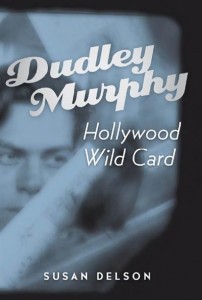This short essay, originally published in December 1993, was the first time I was ever commissioned to write liner notes for a CD — in this case, the soundtrack music for Jon Jost’s The Bed You Sleep In, composed by Erling Wold and released by The Table of the Elements. (The second time was this month, July 2019, when I was invited to write a short essay for a CD in the U.K. of Carlos Santos’ soundtrack score for Pere Portabella’s masterpiece Vampir Cuadecuc.) — J.R.


The Bed You Sleep In is the twelfth feature of Jon Jost, one of the most independent of all American independent filmmakers, and in more ways than one. It can be regarded as a kind of summary of his preceding work. From a conventional standpoint, Jost’s first eleven features, made over the past two decades, fall into two loose categories: fiction (Angel City, Last Chants for a Slow Dance, Chameleon, Slow Moves, Bell Diamond, Rembrandt Laughing, All the Vermeers in New York, and Sure Fire) and personal, experimental essays (Speaking Directly, Stagefright, and uncommon senses). But Jost is far from conventional, and a closer work at his work reveals that such neat divisions can’t always be made. Read more
Commissioned by Indiewire and posted on February 7, 2019. — J.R.


Looking back today at the legacy of Jonas Mekas (1922-2019) as a pioneer of American independent filmmaking, we like to think that he paved the way for us to enjoy our current freedom as spectators. When he was arrested for screening Jack Smith’s Flaming Creatures in New York City in March 1964, along with Ken Jacobs and Florence Karpf, we tend to suppose that this was eventually to ensure that we wouldn’t be penalized for watching the film today.
But maybe we haven’t advanced quite as far in our freedom and sophistication as we like to suppose. Such, at any rate, was my thought when I found myself censored on Facebook last week and banned from posting anything there for 24 hours when I tried to post the following two images:
![220px-Flaming_Creatures_thumb[2]](https://www.jonathanrosenbaum.net/wp-content/uploads/2019/02/220px-Flaming_Creatures_thumb2-216x300.jpg)

I assume it was the second image rather than the first that led to the censorship, but given the usual arbitrariness of what gets banned and why, how can I be sure? All I was doing was advertising the reposting of my own 1998 review of the film in the Chicago Reader (www.jonathanrosenbaum.net/2019/02/sweet-outrage/), and this unexpected glitch raised the question of whether Facebook’s objections were to the single bare nipple being exposed or to the fact that one (apparent) woman was amorously clutching another (apparent) woman. Read more
Commissioned and published by DVD Beaver in 2007. In 2015, Ehsan Khoshbakht and I put together a sidebar for Il Cinema Ritrovato in Bologna, Italy, “Jazz Goes to the Movies,” and then a reconfigured version of this a few months later at the Festival on Wheels in Ankara, Turkey, which led both of us to revisit many of these titles and releases. — J.R.


Broadly speaking, there are two kinds of jazz films — documentary records of particular jazz performances and narrative films that incorporate jazz in some fashion, in their soundtrack scores and/or in their stories. But in some cases, identifying which films belong in which category is simply a matter of personal taste. Consider, for instance, Black and Tan and St. Louis Blues, two landmark jazz shorts directed in 1929 by Dudley Murphy —- a fascinating figure who straddled the avant-garde and the mainstream, having both collaborated with Fernand Léger on Ballet mécanique and Paul Robeson on The Emperor Jones and directed several Hollywood pictures, and who’s been receiving some belated recognition lately thanks to Susan B. Delson’s excellent biography, Dudley Murphy: Hollywood’s Wild Card (University of Minnesota Press, 2006). I would argue that Black and Tan, which stars Duke Ellington, is important chiefly as a narrative film, whereas St. Read more





![220px-Flaming_Creatures_thumb[2]](https://www.jonathanrosenbaum.net/wp-content/uploads/2019/02/220px-Flaming_Creatures_thumb2-216x300.jpg)


